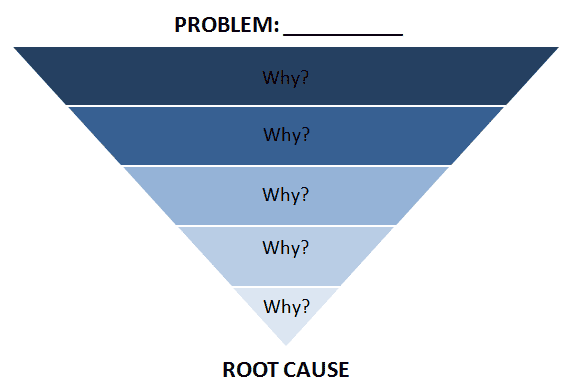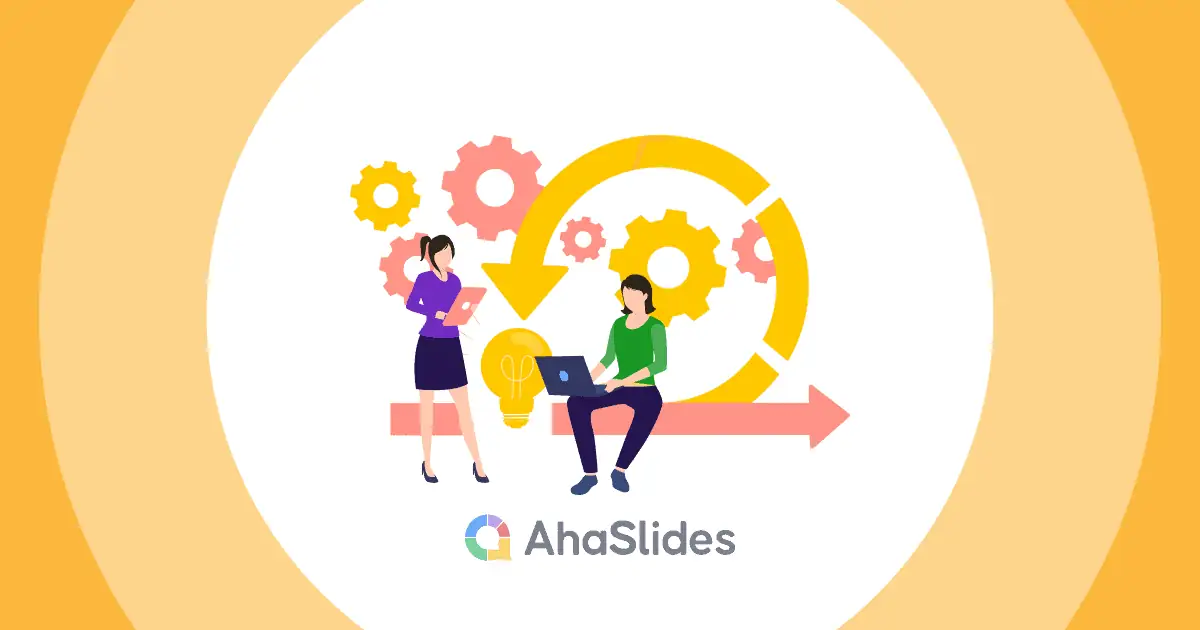If your team is dealing with a persistent problem that you're tired of constantly addressing, it may be time to dig deeper and find the root cause. That's where the Five Whys approach steps in. In this blog post, we'll explore how to simplify organizational complexities by asking "why" five times.
Table Of Contents
- What Is Five Whys Approach?
- Benefits Of Five Whys Approach
- How To Appy Five Whys Approach
- The Five Whys Example
- Tips For A Successful Five Whys Approach Application
- Key Takeaways
- FAQs
What Is Five Whys Approach?

The Five Whys approach is a problem-solving technique that digs deep to uncover the root cause of issues in organizations. It involves asking "why" five times, peeling back the layers of a problem to reveal its underlying factors.
This method, also known as the 5 Whys or 5 Why approach, goes beyond surface-level solutions, promoting a thorough analysis of problems. Often used in problem-solving and decision-making processes, the Five Whys approach helps organizations conduct a five-why analysis, identifying the true origins of challenges to implement more effective and sustainable solutions.
Benefits Of The Five Whys Approach
The Five Whys approach offers several benefits, making it a valuable method for organizations seeking effective problem-solving and root cause analysis. Here are some key advantages of the 5 Whys method:
1/ Deep Root Cause Identification:
The Five Whys method excels in uncovering the fundamental reasons behind a problem. By repeatedly asking "why," it forces a thorough examination, helping organizations move beyond surface-level symptoms to identify the core issues.
2/ Simplicity and Accessibility:
The simplicity of the Five Whys approach makes it accessible to teams at all levels of an organization. No specialized training or complex tools are required, making it a practical and straightforward method for problem-solving.
3/ Cost-Effective:
Implementing the Five Whys method is cost-effective compared to other problem-solving techniques. It requires minimal resources and can be conducted with basic facilitation, making it an efficient option for organizations with limited budgets.
4/ Enhanced Communication:
The process of asking "why" multiple times encourages open communication within teams. It promotes collaboration and a shared understanding of the problem, fostering a more transparent and communicative work environment.
5/ Prevention of Recurrence:
By addressing the root causes of a problem, the Five Whys method helps organizations develop solutions that prevent the issue from recurring. This proactive approach contributes to long-term problem resolution and enhances overall organizational efficiency.
The Five Whys approach, or the 5 Whys method of root cause analysis, stands out for its simplicity, cost-effectiveness, and ability to identify deep-rooted issues, making it a valuable tool for organizations committed to continuous improvement and problem resolution.

How To Appy Five Whys Approach
Here's a step-by-step guide on how to apply the Five Whys approach:
1/ Identify the Problem:
Start by clearly defining the problem you want to address. Ensure that the problem is specific and well-understood by everyone involved.
2/ Formulate the First "Why" Question:
Ask why the problem occurred. Encourage team members to provide responses that explore the immediate causes of the problem. This initiates the investigative process.
3/ Repeat for Each Answer:
For each answer to the initial "why" question, ask "why" again. Continue this process iteratively, typically five times or until you reach a point where the responses lead to a fundamental cause. The key is to go beyond surface-level explanations.
4/ Analyze the Root Cause:
Once you've asked "why" five times or have identified a root cause that resonates with the team, analyze it to ensure it is indeed the fundamental issue. Sometimes, additional investigation or validation may be necessary.
5/ Develop Solutions:
With the root cause identified, brainstorm and implement solutions that directly address it. These solutions should aim to eliminate or mitigate the root cause, preventing the problem from recurring.
6/ Monitor and Evaluate:
Let's put our solutions into action and keep a close eye on their impact as time goes on. Evaluate whether the problem has been resolved and whether any adjustments to the solutions are necessary.

The Five Whys Example
Let's walk through a simple example of the Five Whys approach to illustrate how it works. Imagine a scenario where your marketing team is facing an issue: Website Traffic Decreased
Problem Statement: Website Traffic Decreased
1. Why did the website traffic decrease?
- Answer: The bounce rate increased significantly.
2. Why did the bounce rate increase?
- Answer: Visitors found the website content irrelevant.
3. Why did visitors find the content irrelevant?
- Answer: The content didn't align with the current needs and preferences of the target audience.
4. Why didn't the content align with the audience's needs and preferences?
- Answer: The marketing team didn't conduct recent market research to understand the evolving customer preferences.
5. Why didn't the marketing team conduct recent market research?
- Answer: Limited resources and time constraints hindered the team's ability to conduct regular market research.
Root Cause: The root cause of the decreased website traffic is identified as limited resources and time constraints preventing the marketing team from conducting regular market research.
Solution: Allocate dedicated resources for regular market research to ensure the content aligns with the evolving needs and preferences of the target audience.
In this marketing example:
- The initial problem was a decrease in website traffic.
- By asking "why" five times, the team identified the root cause: limited resources and time constraints hindering regular market research.
- The solution involves addressing the root cause by allocating resources specifically for regular market research to better align content with audience preferences.
Tips For A Successful Five Whys Approach Application
- Involve a Cross-Functional Team: Gather individuals from various departments or functions to gain diverse perspectives on the problem.
- Encourage Open Communication: Create a safe space for team members to share their insights without fear of blame. Emphasize the collaborative nature of the process.
- Document the Process: Keep a record of the Five Whys analysis, including the questions asked and the responses provided. This documentation can be valuable for future reference and learning.
- Adapt as Needed: Be flexible in the application of the Five Whys. If the team identifies the root cause before asking "why" five times, there's no need to force additional questions.

Key Takeaways
In the journey of problem-solving, the Five Whys approach emerges as a beacon, guiding organizations to the heart of their challenges. By repeatedly asking "why," teams can peel away the layers of superficial issues, uncovering the root causes that demand attention.
To enhance the application of the Five Whys approach, using AhaSlides. This interactive presentation tool can streamline the collaborative aspect of the process, allowing teams to collectively dissect problems and contribute to the solution-finding journey seamlessly. AhaSlides facilitates real-time interaction, making the Five Whys analysis a dynamic and engaging experience for teams.
FAQs
What is the 5 Whys technique?
The Five Whys approach is a problem-solving technique that digs deep to uncover the root cause of issues in organizations. It involves asking "why" five times, peeling back the layers of a problem to reveal its underlying factors.
What is the theory of the 5 Whys?
The theory of the 5 Whys is based on the idea that by repeatedly asking "why," one can uncover deeper layers of causation, going beyond surface-level symptoms to identify the fundamental cause of a problem.
What is the 5 Whys teaching strategy?
The 5 Whys teaching strategy involves using the 5 Whys method as an educational tool. It helps students analyze issues by asking a series of "why" questions to understand the root cause.
Ref: Business Map | Mind Tools








